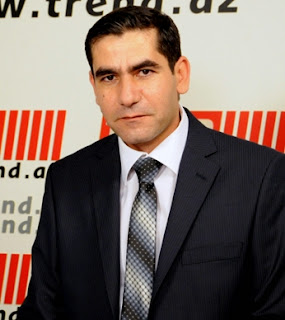World biggest gas holder Iran to be net gas importer until March 2015
Iran's Oil Minister Bijan Namdar Zanganeh said Iran will become self-sufficient from gas imports after the Iranian 1394 solar year which will start on March 20, 2015.
According to Shana News Agency, Zanganeh said on October 30 that gas shares 70 per cent of Iran's energy consumption basket.
Iran has 33.6 trillion cubic meters of gas reserves.
According to the U.S. Energy Information Administration report, Iran's natural dried gas output was about 153 billion cubic meters (bcm) which is as much as the domestic consumption figures.
According to this report released in March 2013, overall, Iran's natural gas consumption is expected to grow around seven per cent annually for the next decade.
Natural gas accounted for about 59 per cent of Iran's total domestic energy consumption in 2010 with oil consumption at 39 per cent of total energy use, according to EIA.
Iran's gas import from Turkmenistan has decreased from above 10 bcm in 2010 to 4.5 bcm last year, while Iran has obligation to export annually 10 bmc of gas to Turkey.
Zanganeh visited Turkmenistan two months ago to revive the gas import volume, but there is no information on achieving a result.
Mehr reported in September 2012, that Iran's debts to Ashgabat reached $1 billion due to Western sanctions over Iran's banking system.
There has not been anything published about paying off Iran's debts to Turkmenistan, as of yet.
Gas network
Zanganeh went on to say that Iran's gas network is just a combination of equipment including a pipeline constructed from a gas source to consumption points, but this not a real network.
"We should have a network to be able to compensate gas shortages in the regions during possible accidents and emergency situations from other regional gas networks. I have already ordered a review of the present national gas network system to be changed," he said.
Iran's total domestic gas pipeline network has extended to 265,000 km, Mehr News Agency quoted former deputy of oil minister Javad Owji in December 2012.
South Pars
Iran eyes boosting gas production by commencing 12 new phases of the joint South Pars gas field, but Zanganeh said there are only two, Phases 15 and16, until March 2015. Iran needs a $25 billion investment to commence remaining phases of South Pars (phases 11 to 24) to boost gas output by 300 mcbpd in 2.5 years.
Current situation of South Pars phases
| ||
Starting date
|
Progress
|
Phase
|
-
|
0 per cent
|
11
|
64 months
|
92 per cent
|
12
|
41 months
|
64 per cent
|
13
|
41 months
|
50 per cent
|
14
|
76 months
|
92 per cent
|
15 and 16
|
76 months
|
82 per cent
|
17 and 18
|
41 months
|
60 per cent
|
19
|
41 months
|
51 per cent
|
20 and 21
|
41 months
|
63 per cent
|
22, 23 and 24
|
The South Pars gas field, divided into 24 phases, (Ten phases has been commenced with 242 mcmpd output capacity so far) which is located in the Persian Gulf on the common border between Iran and Qatar. It is estimated that Iranian part of the field contains 14 trillion cubic meters of gas and 18 billion barrels of condensate.
CNG output and fuelling power plants
Zanganeh also mentioned the necessity of developing the compressed natural gas (CNG) industry, saying replacing each litre of gasoline with one cubic meter of CNG equals a benefit of 55 per cent.
Each cubic meter of CNG is sold at 2600 rials, some $0.2 to CNG stations.
Earlier, IRNA quoted National Iranian Oil Products Distribution Company official Shahram Asadpour as saying that Iran plans to establish 314 new CNG stations across the country in order to boost the CNG share in the country's fuel basket by two per cent to reach 25 per cent.
Iran has only 16 CNG stations now and the production level of this fuel is 17.74 mcmpd.
Iran produces about 62 million litres of gasoline per day and has to import seven million litres of gasoline per day.
Zanganeh also said that the liquid fuel (gasoline and mazut) supply towards electricity generation at the power plants will increase instead of decreasing gas supplies to this sector in winter due to gas shortage.
"The liquid fuel share in fuelling power plants was 19 per cent in 2000, while the figure increased to four per cent currently due to delays in Iran's gas production projects," he said.


Comments
Post a Comment